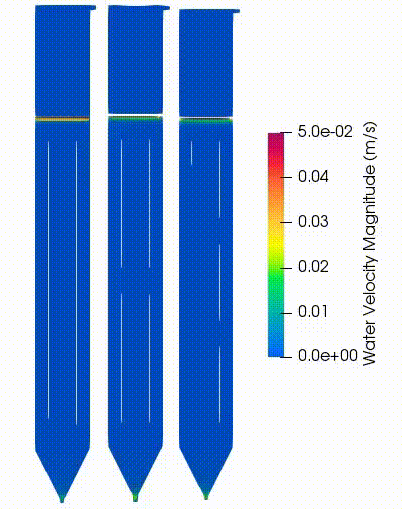AgRefine - Multiphase study on state-of-the-art air lift bioreactors
In order to transition to the bioeconomy, state-of-the-art biorefinery systems are needed. Biorefineries offer potential pathways for producing organic chemicals, fuels, polymers, and electricity from biomass with complex processing technologies. Among these complex processing technologies, the design and analysis of bioreactors are crucial to the successful operation of biological processes. The improvement of mass transfer in and between phases through mixing is the key success factor in the design of bioreactors. There are many studies focused on mechanically stirred reactors, but not many on pneumatically stirred systems.
Air-lift bioreactors are widely used in the biochemical, chemical, and pharmaceutical industries. Their applications go from fermentation systems to wastewater treatment. The main advantages of air-lift reactors over other types of reactors are they offer efficient gas-liquid dispersion with good mass and heat transfer, low energy consumption, and operational costs.
Internal loop air lift bioreactors control their flow with draft tubes and buffers. The proper design of the vessels and the placement of draft tubes in these systems play an essential role in mixing and has a significant influence on two-phase hydrodynamics as well as on mass transfer in the reactor since the draft tube guides the flow field.
As a first study on air lift reactors, the comparison between single and double draft tube was performed. A second study evaluated the effects of the separation between draft tubes. A third study was performed for an oral presentation at the 25th Conference on Process Integration for Energy Saving and Pollution Reduction (PRES'22) and a poster presentation at the Biorefine Conference: “the role of biorefineries in European agriculture”. On this third study three different reactor geometries were evaluated with single and double draft tubes. Once these geometries were evaluated, a fourth study is currently under development in one of these geometries comparing the flow field in single, double, and triple draft tube configurations.

Figure 1: A 1.75-meter vessel was utilized with a single (1 m length), double (0.45 m length each), and triple (0.275 m length each) draft tubes. It is known that the inlet configuration has limited effects on the global flow dynamics in the airlift column reactor for column with an aspect ratio greater than 8 width-diameter. An aspect ratio of 9 was utilized for the reactor with a pipe inlet of 25 mm. An air inlet velocity of 0.04 m/s was used. Liquid height was set to 1.3 m. The figure has been accelerated to 20 times the original speed for visualization.
About the author:
Fernando Ramonet is part of the Research Group of Computational Fluid Dynamics in the Institute of Chemical, Environmental and Bioscience Engineering in TU Wien, under the supervision of Professor Michael Harasek. He is currently a PhD student working on the AgRefine interdisciplinary project. His work focuses on the study of biorefinery systems (i.e., bioreactors and anaerobic digesters) through computational fluid dynamics.


